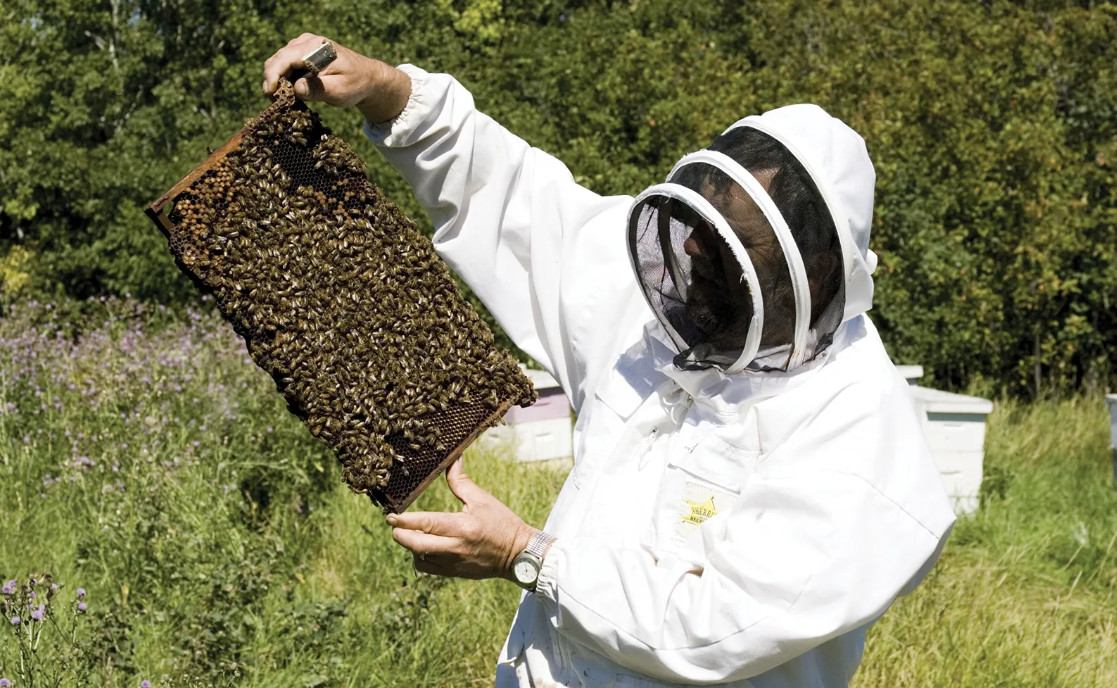Honey, a golden elixir produced by the diligent honeybee, is a remarkable natural gift. Beyond its delightful taste and natural sweetness, honey has been revered for its numerous health benefits and is a staple in kitchens worldwide. However, beyond its culinary applications, honey holds vast income-generating potential, making beekeeping an attractive venture for those looking to tap into this sweet opportunity.
Beekeeping and the Making of Honey
The story of honey begins with the extraordinary work of bees. Honeybees are nature’s master alchemists, transforming flower nectar into liquid gold. When bees collect nectar from flowers, they store it in their abdomens, forming what is known as the honey stomach. In this remarkable biological process, protein molecules within the honey stomach combine with the nectar to break down its sugars into fructose and glucose.
Once the nectar is processed, worker bees, who are typically female, transport it back to their hives. They deposit the nectar into hexagon-shaped compartments within the hive known as cells. Alternatively, they may use this nectar to feed the larvae or the queen through regurgitation.
This collective bee effort results in honey, a substance rich in simple sugars that can quickly be converted into energy. Honey is the primary source of sustenance for worker bees, larvae, and the queen bee. Beyond their role as nature’s custodians, honeybees are unwitting contributors to an industry that revolves around their extraordinary products.

Product Development in Beekeeping
Beekeeping, scientifically known as apiculture, is a straightforward yet fascinating field of agriculture. It begins with selecting an appropriate apiary site, which should be in close proximity to nectar sources, allowing bees to collect nectar efficiently. Hives, the homes of these industrious insects, can be made from various materials, including wood, pottery, or straw.
Essential tools and equipment used in beekeeping include fume boards, entrance reducers, bee feeders, smokers, hive tools, and protective coveralls for beekeepers. Throughout the beekeeping process, diligent monitoring is essential to ensure the well-being of the bees. This includes supplementary feeding and managing potential health issues to maximize bee productivity and produce high-quality honey.
Beyond honey, beekeeping yields other valuable products. Worker bees produce beeswax in the hive to build honeycombs and nurseries for larvae. This versatile substance finds application in candles, lip balms, and various cosmetic and pharmaceutical products.
Royal jelly, another honeybee by-product, is produced for the nutrition of larvae, queens, and drones. Today, it is a dietary supplement for humans, known for its nutritional richness and potential health benefits. Bee pollen, also obtained through beekeeping, is a highly nutritious substance with medicinal value.
The Potential of Apiculture
In many regions, beekeeping is emerging as a promising income-generating activity due to its simplicity, minimal processing requirements, ready market, and suitability for rural settings. Beekeeping’s commercial potential extends beyond the sale of honey and its products. It includes breeding bees for new colonies and leasing bees for crop pollination, a vital service supporting agricultural production.
One region where beekeeping is gaining ground as an additional source of income is Sorsogon, Philippines. The province’s abundant bee colonies and proximity to nectar sources make it an ideal location for beekeeping. However, the industry faces challenges concerning pest and disease control, which hinder honeybee production.
In response to these challenges, the Sorsogon State College initiated the “Promotion of Beekeeping in the Province of Sorsogon” project in collaboration with the Department of Agriculture – Bureau of Agricultural Research. The project aims to boost the beekeeping industry and increase its livelihood potential.
A Buzzing Opportunity
Beekeeping is undoubtedly a buzzing opportunity for individuals seeking a livelihood and the environment. One remarkable fact highlights the dedication of these tiny pollinators: it takes approximately 5,000 flower visits by honeybees to produce just one teaspoon of honey. This astonishing statistic underscores honeybees’ incredible work ethic and their role in our ecosystem.
While beekeeping requires little direct human intervention in honey production, it necessitates investment in hives, equipment, and proper environmental management. The benchmarking research conducted by the Sorsogon State College and the Department of Agriculture – Bureau of Agricultural Research is a significant step towards understanding the challenges and potential of beekeeping in the region.
This research equips beekeepers with valuable insights by gathering essential data on the status of native and European honeybee breeds and identifying pest-related challenges. This knowledge will enable them to develop better bee management practices, improve honey production, and harness the full potential of honeybee by-products.
The Bottom Line
Beekeeping represents an income-generating opportunity that supports livelihoods and contributes to the preservation of an essential natural pollinator. As we uncover the secrets of honey production and beekeeping, we pave the way for a sweeter and more sustainable future, ensuring that the buzz around this remarkable industry grows louder each season. Beekeeping is an endeavor that enriches our lives and nourishes the planet.
See Also:
- The Rabbitry Revolution: Gigi Morris’ Journey from Fine Dining to Farming in Batangas
- 9 Health Benefits of Tawilis, Description, and Side Effects
- Health Benefits of Janitor Fish, Description, and Disadvantages
- Kanduli: Health Benefits of Pangasius, Description, and Side Effects
- Dalag: 8 Health Benefits of Mudfish, Description, and Side Effects
